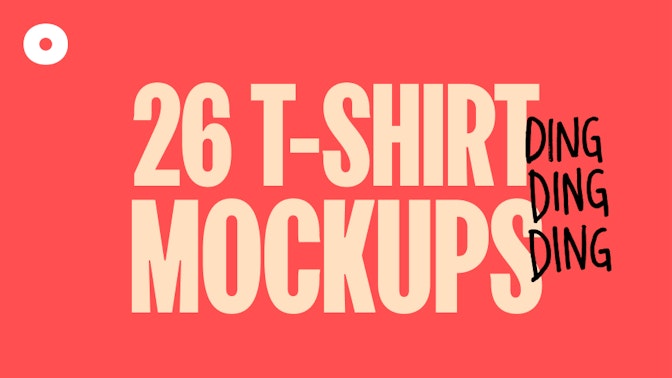Have you got an eye for style? Then you’d be surely interested in learning how to start an online boutique.
In a world full of huge corporations, customers are still searching for something unique.
A boutique is a niche take on the modern business world, defined by stylish products, personalized service, and a unique brand.
A small store often responsible for selling highly specialized products, like fashionable clothing, accessories, and hand-made interior décor, online boutiques are ideal for aspiring entrepreneurs who want to create a dedicated tribe of customers.
Thinking of starting a Shopify Store?
Bring your business online with Shopify, the most powerful ecommerce platform out there
Start a free Trial todayFind the right style to vibe with your target audience, and you could become a brand over the long-term.
Before the digital age, boutiques often attracted customers in-person with small stores brimming with charm and aesthetic appeal. In today’s virtual world, it’s up to you to recreate that unique experience online.
This checklist will help you to do just that.

7-Step Checklist for Starting an Online Boutique
Step 1: Decide on Your Niche
One of the things that set a boutique store apart from other online shops is its unique focus on a niche market. Instead of focusing on “fashion,” for instance, your boutique might specialize in handmade shoes that are customized for a client’s wedding day. Rather than just offering “jewelry,” you might create stunning bracelets made in each customer’s birthstone.
The best niche for you will be one that you understand and feel passionate about. It’s always better to get into business in an area that you love. However, it’s also worth doing your research into the kind of demand each section of the market sees.
You can use Google Trends to check for insights into what’s resonating with people before opening an online boutique. For instance, searches for plus-size clothing are increasing these days, so you might want to start off in this niche before expanding to other areas of interest.
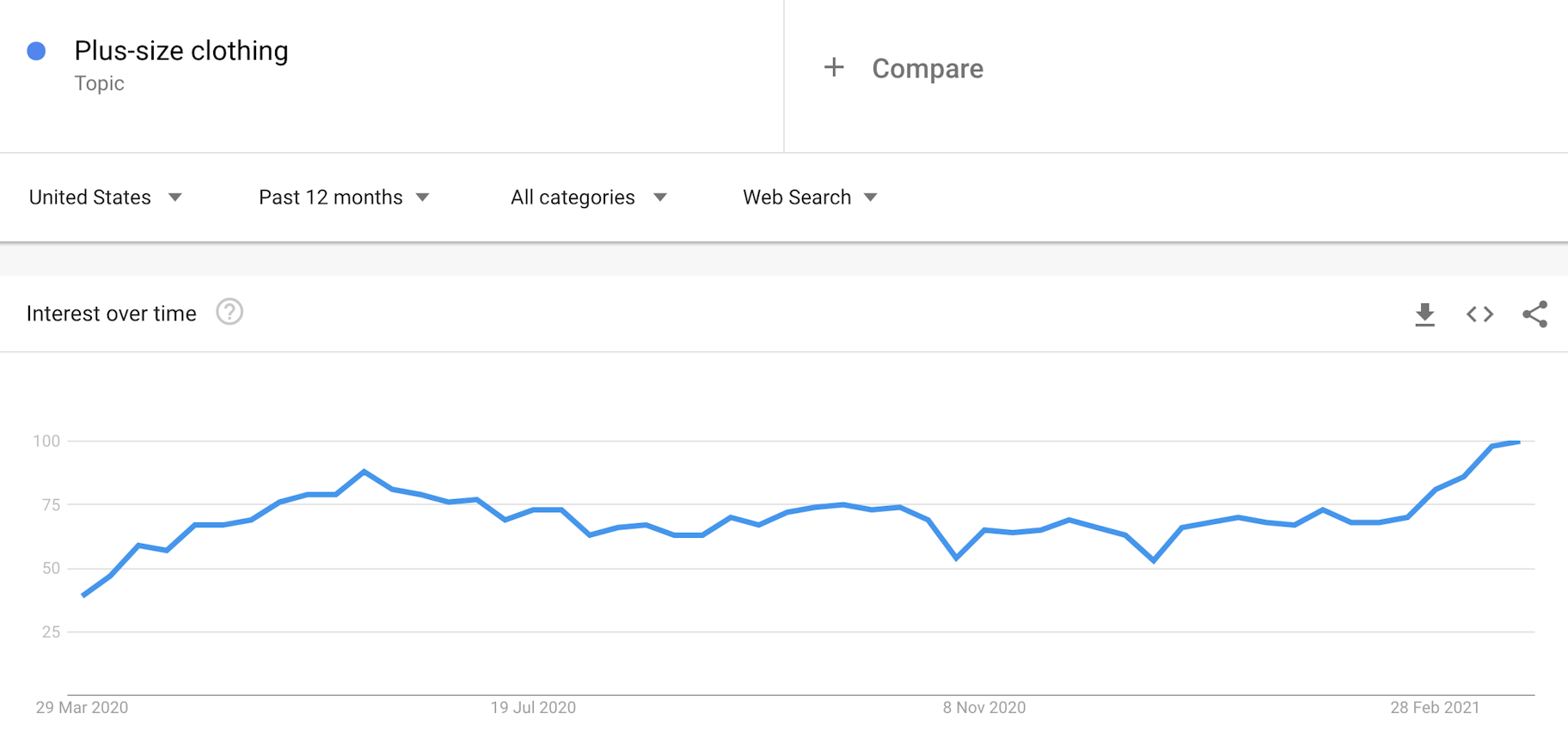
To help with your brainstorming session, here are some ideas:
- Apparel: Vintage clothes, handmade clothes, plus-size clothing, athletic wear, children’s clothes, custom clothing, or one-off designer brands.
- Jewelry: Handmade necklaces and bracelets, chainmail jewelry, semi-precious stones, unique metalwork, stained-glass earrings.
- Accessories: Handmade bags and purses for women, customized sunglasses, hats for weddings, unique scarves, and children’s shoes
- Luxury items: high-quality branded products, one-off items, luxurious foods and drinks, handmade interior décor items.
You can also branch out of the apparel and accessories environment to look into other “luxury” markets. Chocolate boutiques that sell ultra-rich gifts are a good pick. Or how about a boutique that makes luxury collars for dogs?
Step 2: Write a Business Plan
Deciding what you’re going to sell in your boutique is only the initial part of learning how to start an online boutique.
As keen as you might be to jump into the designing and manufacturing process, don’t get ahead of yourself. Write a business plan first to ensure that you have a strategy to go from idea to profit.
Sure, drafting one might not seem like the most fun, but it’s an important part of ensuring you’re prepared for success.
Don’t miss out on this part of your starting an online boutique checklist. Use your business plan to ask yourself:
- What does my business do? What do you sell, and why do you sell it?
- What are the values of this company? What do you feel passionate about?
- Who is my target market? Who are you trying to reach specifically with your brand?
- Who is my competition? Are there any companies similar to yours out there?
- How much can this business earn? Look into the market value for your company.
- What are the strengths and weaknesses of the business?
- Who are the members of your team? List anyone who’s going to be involved in the venture.
You can prepare a business plan by hand if you’re familiar with its structure or use our business plan template to simplify the task.

How much does it cost to start an online boutique?
This is another question that you can answer with your business plan. Look into the kind of expenses you’re going to need to account for when you begin building your business. You’ll need to consider all of the initial costs of set-up, including website and domain registration.
Since your online boutique will be an ecommerce operation, you can use a solution like Shopify to set it up. It’ll cost you $29 per month plus $10-$15 for the domain.
It’s also worth planning how much ongoing capital you’re going to spend on things like inventory and marketing.
Inventory is usually an ecommerce store’s biggest expense, but you can avoid it by using the business model of dropshipping (more on that later). For promotion, you can tap into free marketing channels to get the initial word out, then look into paid advertising to bring more exposure to your boutique.
Having a general idea of the capital required to set up your boutique will help you determine how much to take out of the bank.
Step 3: Find a Manufacturer or Supplier
Now that you have your business plan to guide you, it’s time to start stocking your store with amazing products. Even if you’re making hand-made items, you’re going to need to look into some extra help from other manufacturers if you want to scale.
Finding a reliable manufacturer or supplier will help you to achieve more work/life balance with your store. Plus, more help means more opportunities to scale your successful online boutique.
Look for a manufacturer or supplier who can either give you the materials required to create your products or ship those items directly to your customers for you. Opening an online boutique is much easier if you have another party to handle fulfillment for you.
When choosing your supplier:
- Always ask for samples: Boutique stores are all about quality. You can’t ensure that you’re delivering quality products to your customers until you’ve checked how good they are yourself. Ask for samples so you can be sure of what you’re selling.
- Discuss how your relationship will work: Is your supplier just going to ship you the basic materials, or will they customize and create your items for you? How quickly can you expect deliveries, and how much control do you have over the amount you order?
- Location: Having someone close to home as a supplier or manufacturer makes it easier to communicate your needs. You might also find that working with local boutique vendors, like those present on Handshake if you’re based in the US, helps you receive your supplies quicker.
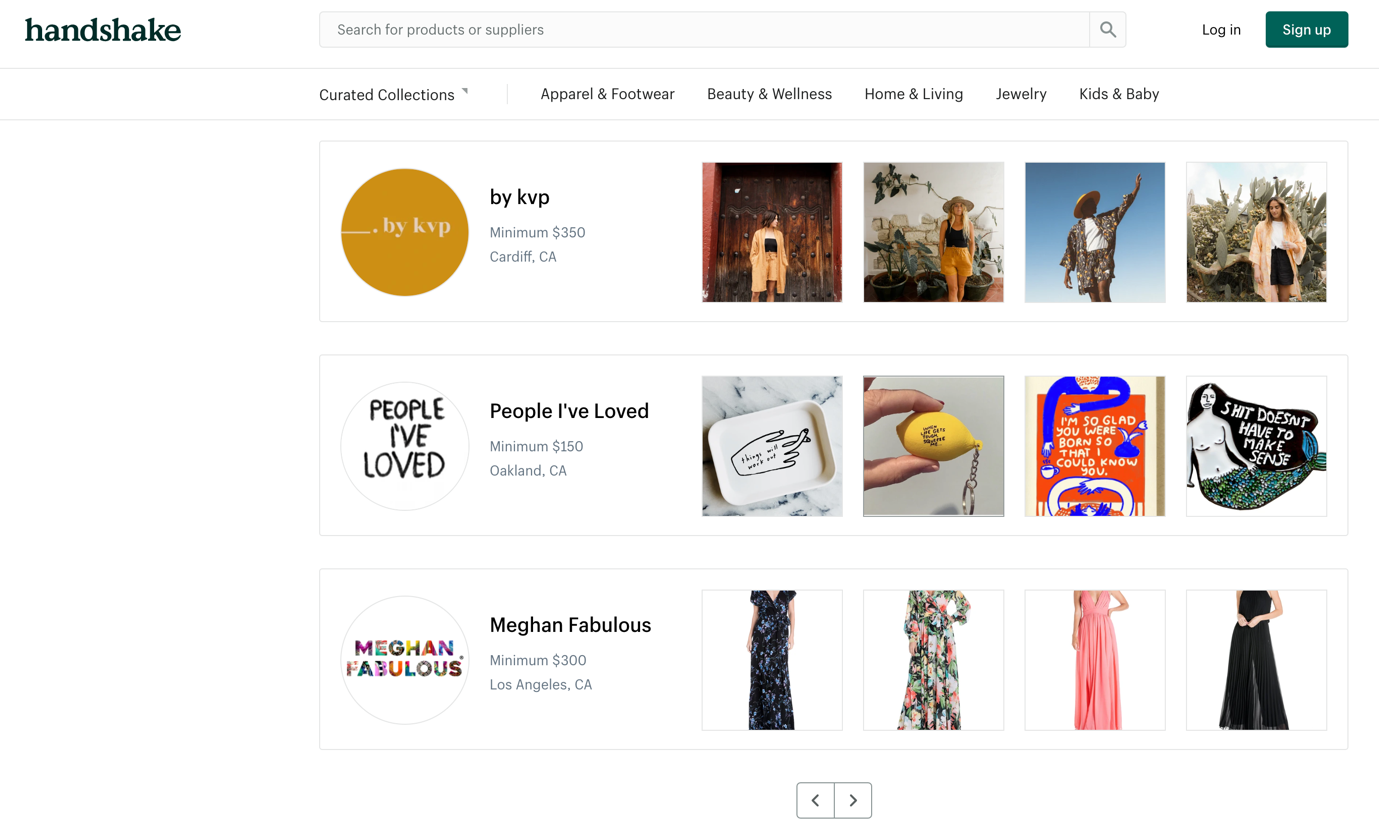
However, having stock of your products on hand means you’ll have to store them somewhere. Plus, you’ll need to stay on top of stock levels while managing ordering, packaging, and deliveries. If all that seems too much to handle, the easiest option might be to start with dropshipping.
Dropshipping means that your supplier sends the item straight to the customer, so you don’t have to keep any inventory. All you have to do is set up an online boutique and list products on your website. You then promote those items, and when a customer purchases one, your supplier handles the rest. It’s a great way to save time so that you can focus more on our next crucial step. (PS Oberlo has tons of boutique items that you can display directly in your store).
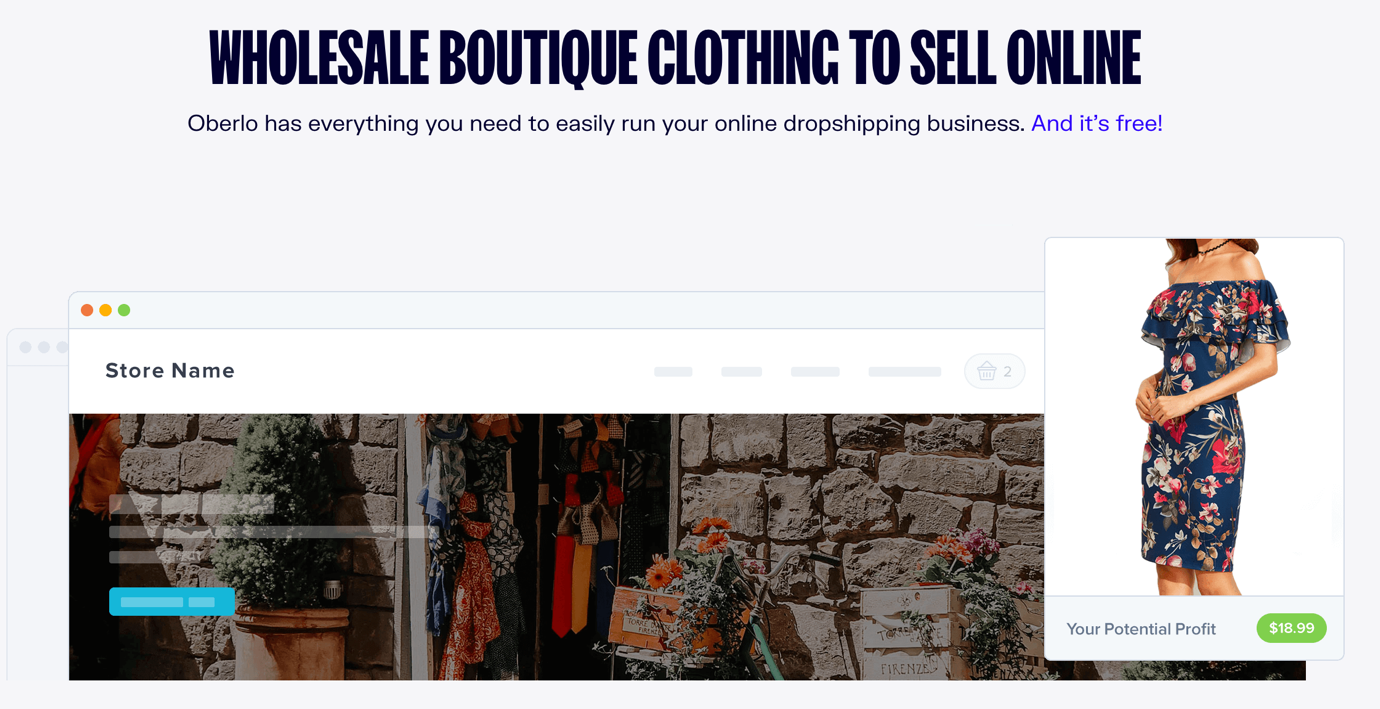
4. Build Your Brand
A brand is everything for a boutique.
While great branding will help any company to thrive, your brand will make or break your chances of success as a boutique. A strong brand requires a stunning logo, a memorable name, and an enticing color palette. Fortunately, you can create these branding assets on your own with the help of online tools.
For example, Shopify offers a:
Each tool has impressive results to offer. For example, I just had to write “boutique” in the slogan maker, and the tool showed me hundreds of cool suggestions that I could use for boutique branding. Check them out below.
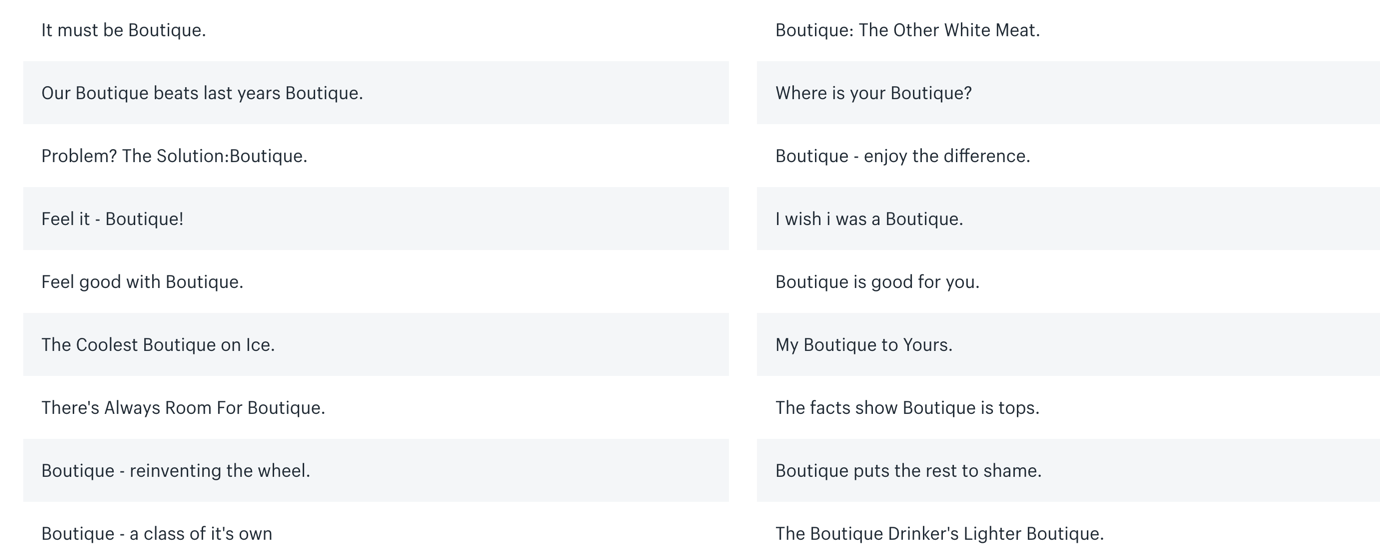
If you’re stretched for time, there are plenty of freelancers on sites like Upwork and Fiverr who can help with things like logo design and brand videos.
5. Fulfill Any Legal Requirements
Handling the legal requirements and legislation for your business is a bit like making a business plan. It’s not always exciting, but you need to master this part if you want to avoid problems down the line. Any company you start needs to be properly aligned with the right regulations and laws in your region. You’ll need to register your business and potentially apply for trademarks to protect your name and logo.
Just some of the legal requirements you’ll need to think about include:
- Business permits, licenses, and registration
- SKUs for any products you want to sell
- Shipping costs and where you can ship to
- Shipping restrictions for your items
- Sales and business tax returns
- Copyright, patent, and trademark requests
- VAT and extra business expenses
- Business types: Limited Liability, sole trader, etc.
Not every legal requirement for a new business will apply to a boutique company, so it might be worth speaking to a legal professional or business mentor if you’re not sure what you should be applying for. Remember that boutique businesses need to be particularly careful about sending branded items from other leading designers, as you don’t want to end up with copyright infringement cases.
6. Create Your Online Boutique Storefront
You’re almost ready to start selling your boutique products. First, however, you need a website where you’re going to host those items and connect with your customers. When learning how to start your own boutique, you might be worried that you don’t know how to code your own website.
Fortunately, you don’t need a lot of background knowledge to get started these days. Ecommerce platforms like Shopify make it easy to create a unique storefront in no time. You can build an online store in less than 30 minutes and start selling the same day.
One big benefit of Shopify is that it also offers access to Oberlo, which was created to optimize the whole dropshipping process for ecommerce entrepreneurs. After you’ve set up your storefront, go to the Oberlo app and start importing products that you think would sell well online.
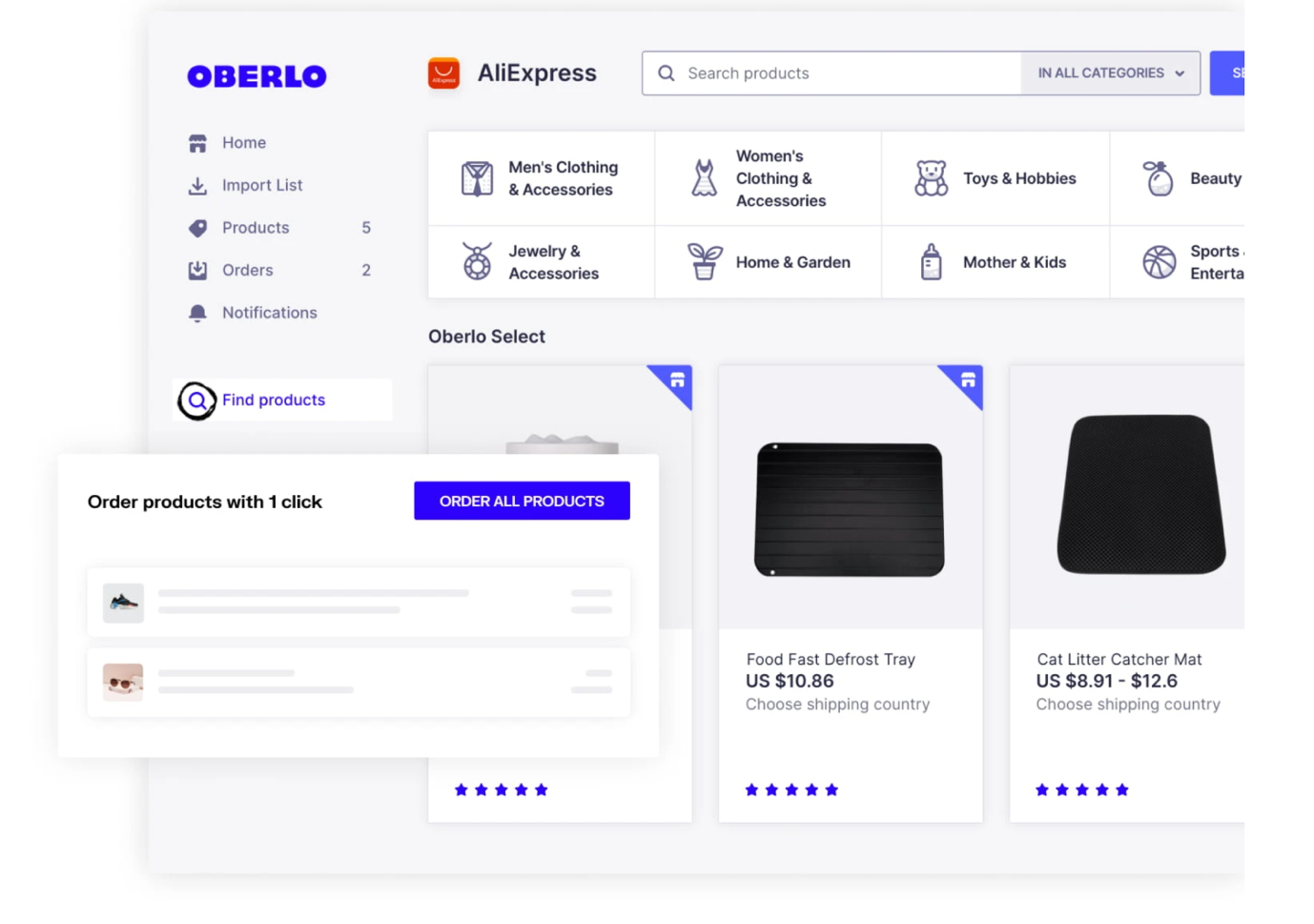
Here are some other things you’ll want to build out in your online boutique:
- Great product pages where you can show off boutique items
- A checkout page with a choice of payment gateways for customers
- Privacy policy and terms and conditions pages
- A news page where you announce new products
Remember, you can start with a pretty simple website, then build out with more pages over time. There’s nothing stopping you from adding more features in the future, like an email marketing integration to connect with your audience, or a blog.
7. Promote, Promote, Promote
Unfortunately, just building an amazing store isn’t enough these days.
Once you know how to start an online boutique, you need to start experimenting with different ways to promote your business. Explore a range of marketing methods to get your brand name out there and attract new customers as often as possible. You can try:
- Influencer marketing: Great for selling luxury products, this marketing tactic involves partnering with an expert who already has a connection with your target audience. With an influencer, you can immediately boost your brand’s credibility on every platform, from TikTok to Facebook.
- Social media marketing: Get people talking about your brand on social media. Most boutique companies will thrive on visual platforms like Pinterest and Instagram. You could even show how your luxury products are made with videos on YouTube.
- Email marketing: Email marketing is a brilliant way to build relationships with your customer’s over-time. You can send emails about your latest products.
Online Boutique Examples
Need some extra inspiration? Here are some fantastic examples of online boutiques to help you imagine what your new store could look like.
1. Closet Candy Boutique
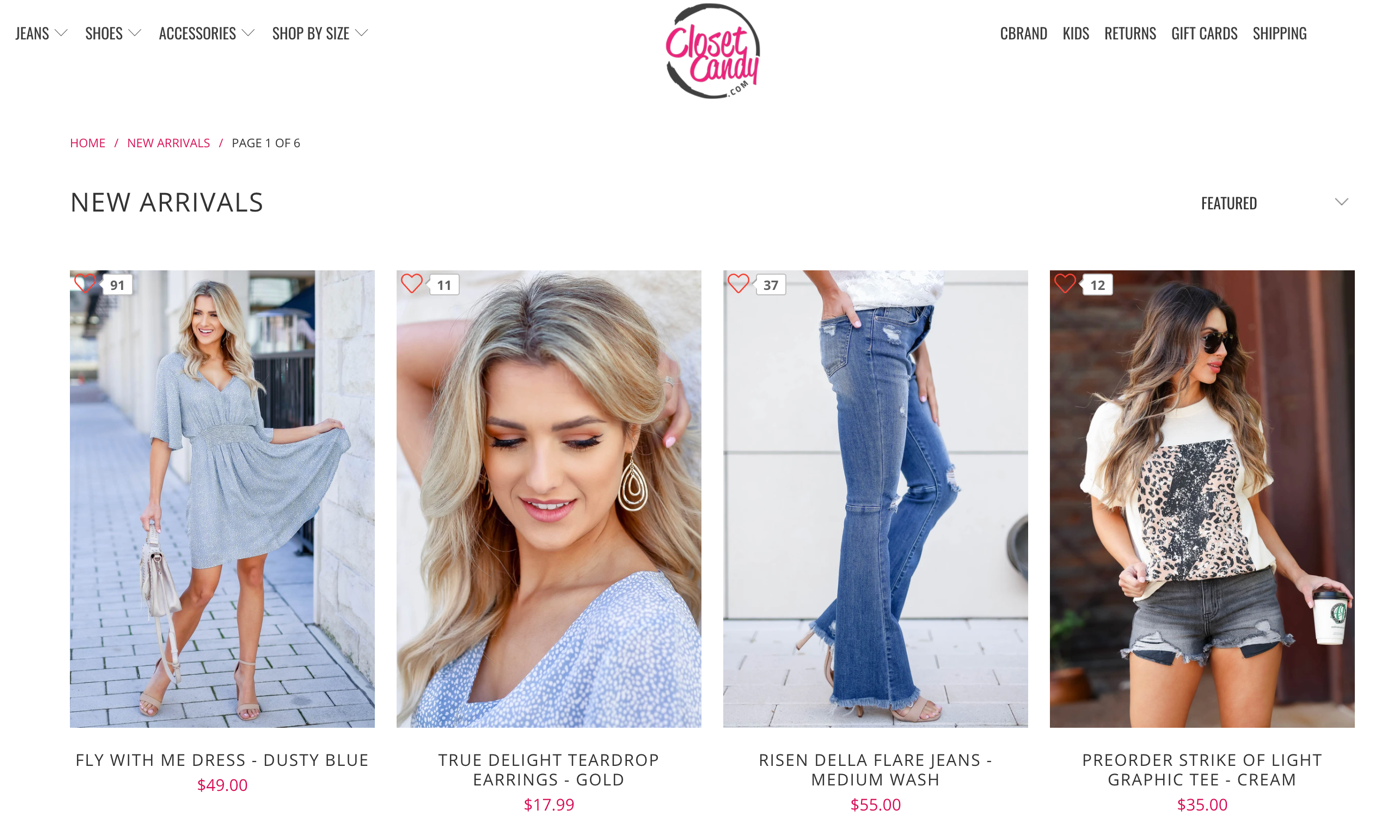
The Closet Candy Boutique offers stylish clothing to people of all ages, from stunning vintage jeans to graphic t-shirts and more. The store is brimming with different products to check out, and new lines appear all the time. This is a great example of how quickly a boutique can grow.
2. Khara Kapas
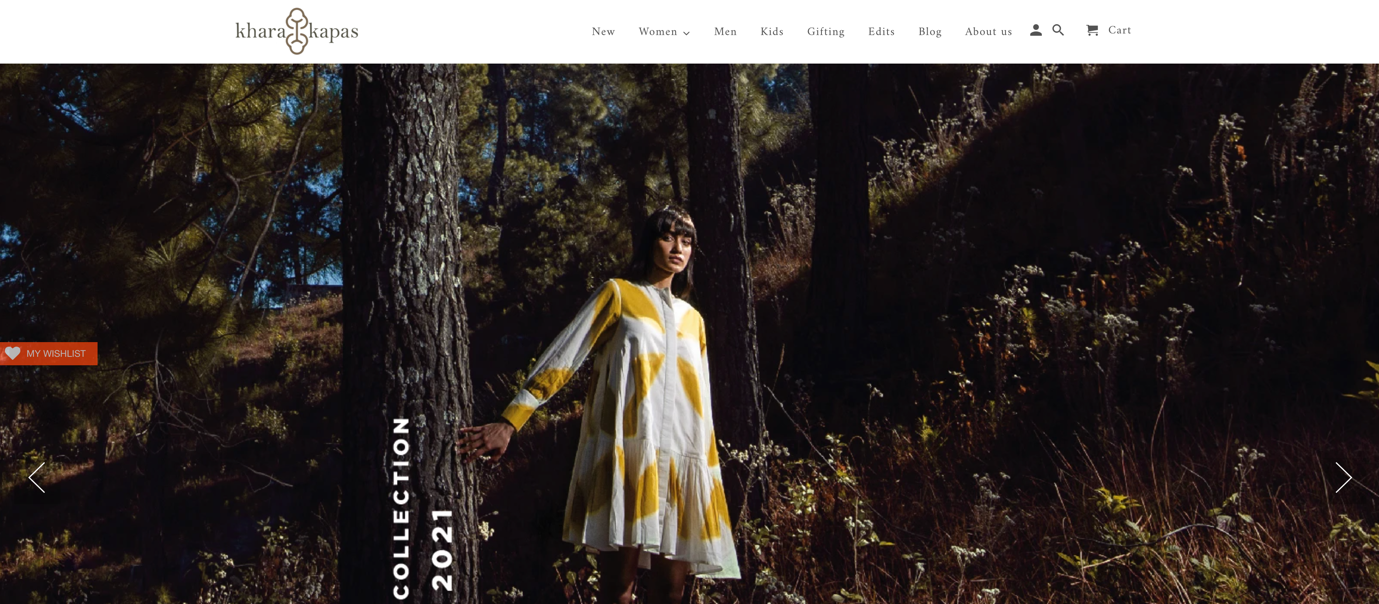
Khara Kapas is an online boutique that understands the benefits of finding an underserved niche. A clothing store committed to creating products from natural, hand-crafted cotton; this is a fashion company like no other. Khara Kapas offers cotton clothing you won’t find anywhere else.
3. Outcast Clothing
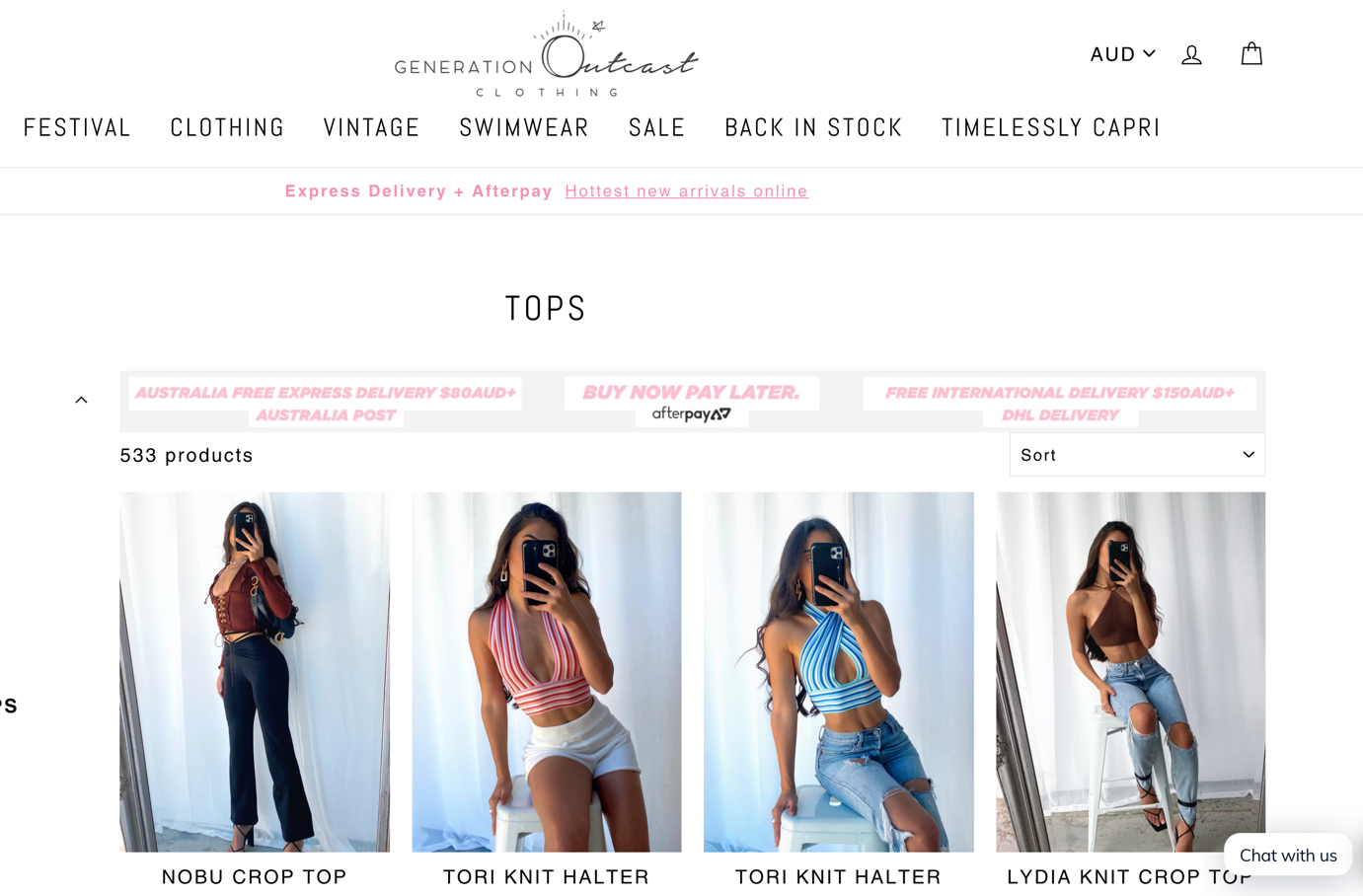
A clothing boutique designed to appeal to the younger generation, Outcast Clothing is popular thanks to its wide selection of fresh looks and its unique brand voice. Alongside complete outfits and crop tops, Outcast-clothing also sells vintage t-shirts.
You’re Ready to Start Your Boutique
Now you know how to start an online boutique; all that’s left is to go and start selling. Starting your own business doesn’t have to be a headache, thanks to useful ecommerce website building tools and dropshipping services. You can design the ultimate luxury boutique and start selling your products in no time. Now get out there and start building that brand.
Summary: How to Start an Online Boutique In 7 Easy Steps
- Find your boutique niche
- Write a business plan
- Find a manufacturer or dropshipping supplier
- Build your online brand
- Fulfill any legal requirements
- Create your online boutique storefront
- Promote your business
How do you feel about starting an online boutique? Did we miss a great boutique niche? Let us know in the comments below!


